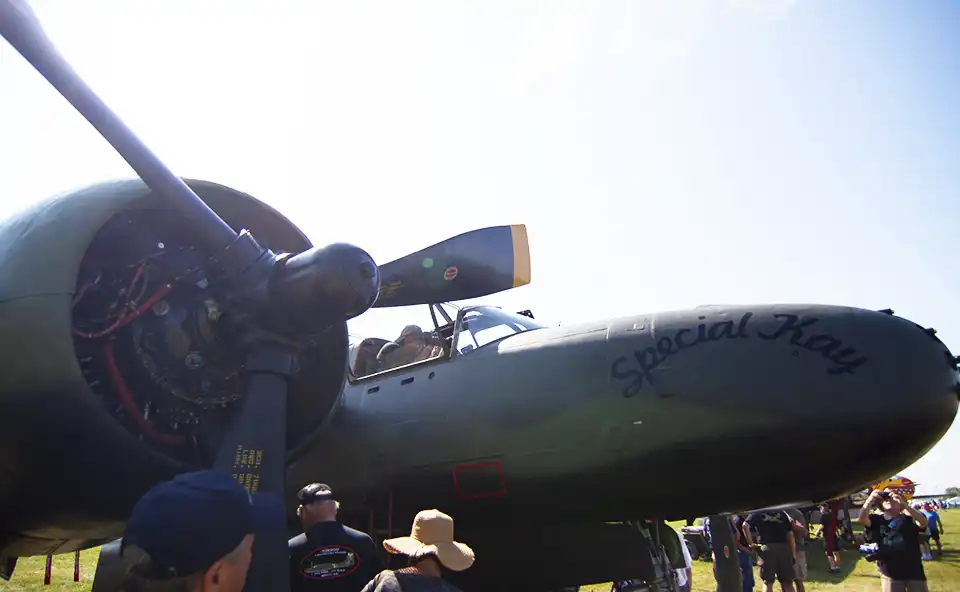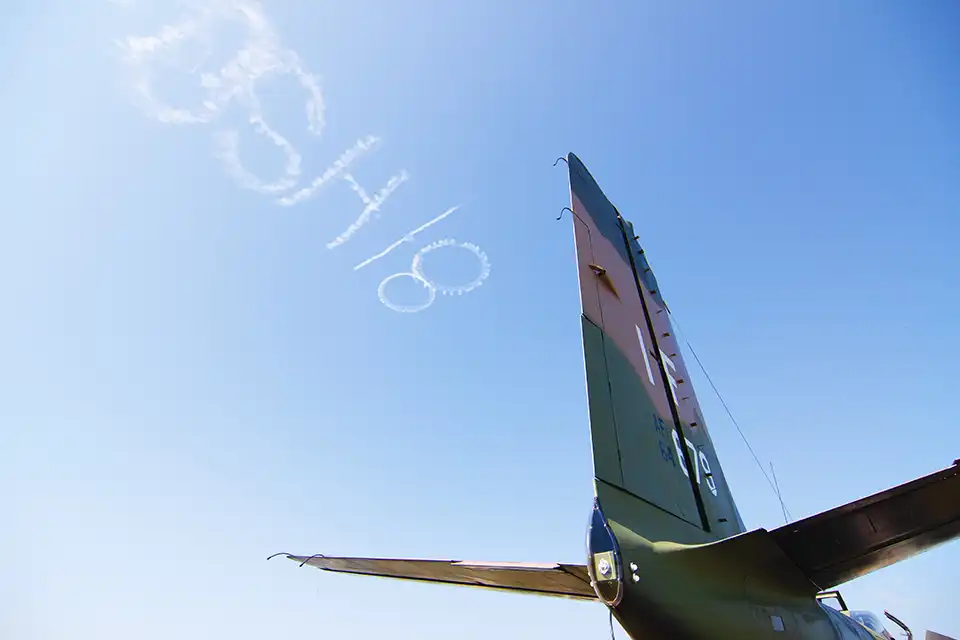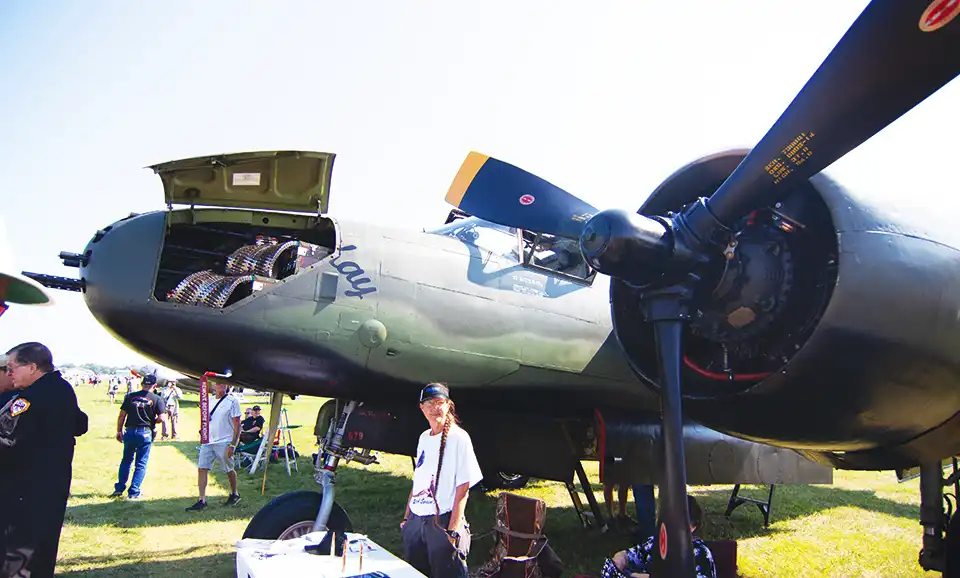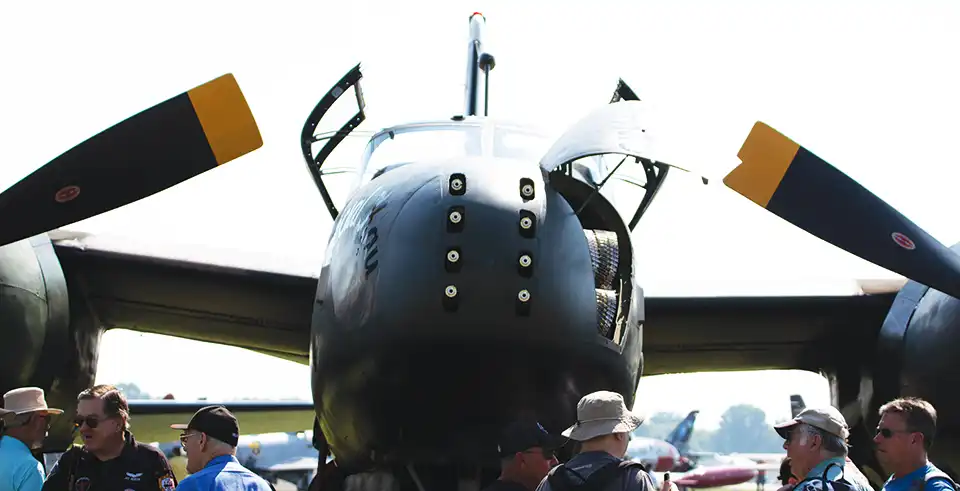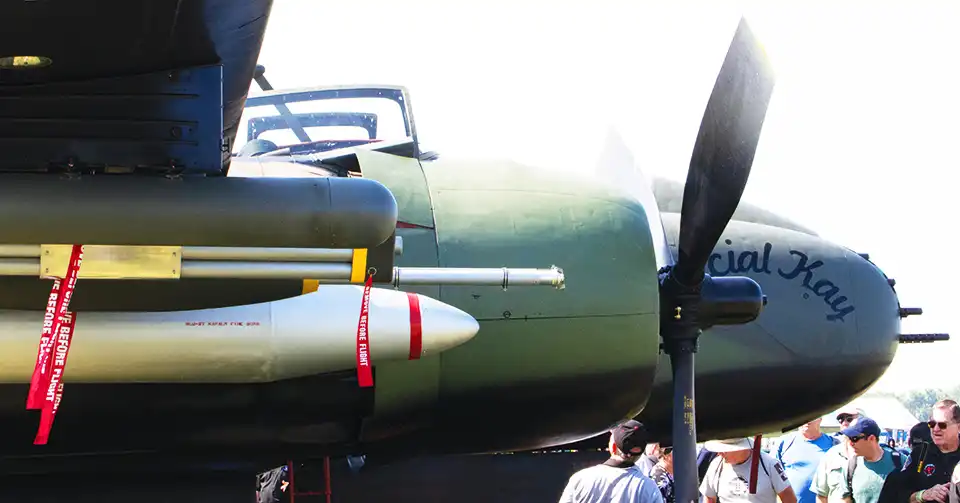B-26K Is a No-Nonsense Beauty
Douglas A-26 Invader morphed into valued B-26K Counter Invader
By Frederick A. Johnsen
July 24, 2018 - It’s a bit like a Corvette customized as an off-road vehicle. Sleek, but also beefy and hardy enough for jungle warfare from less-than-perfect airstrips. The ever-glamorous Douglas A-26 Invader became the muscular B-26K Counter Invader seen at AirVenture 2018 as the ultimate iteration of this bomber that survived three wars.
A team of restorers and crew members of the B-26K described the bomber at this year’s first Warbirds in Review session. It is the pride of the Fort Worth-based Vintage Flying Museum. Resonating throughout their panel discussion were two themes. The restoration of one of only 40 B-26Ks serves as a tangible way to honor veterans of the war in Southeast Asia and “bring those guys home,” as team member Scott Carlson explained. The restoration also serves as a magnet to attract young people into the world of historic aircraft restoration and operation. Restoration chief J.R. Hoffman reminded the audience that these icons require the next generation to keep them flying.
The Douglas A-26 Invader was an inspired design from the team of Ed Heinemann. Serving in World War II, Korea, and Vietnam, original Invaders were fast and capable. But wear and tear caught up with them. Two Invaders were lost in 1963 and ’64 when their wings failed. On Mark Engineering at Van Nuys, California, had a fix for the problem. On Mark already had a reputation for turning surplus A-26s into plush, fast executive aircraft. The company’s bag of tricks included wing strengthening, along with tip tanks for added fuel and broad paddle props for performance. The eight underwing pylons of the strengthened B-26K could carry a total of four tons of weaponry. Counter Invaders served the U.S. Air Force in Southeast Asia from 1966-69.
Rebuilding this B-26K, nicknamed Special Kay, required about $900,000 and the talents of 65 volunteers. Starting in May 2010, the team initially retrieved two garbage cans’ worth of bird nests and debris from the airframe that had been parked in Montana for many years.
Retired Air Force Col. Tim Black, who is scheduled to fly Special Kay at AirVenture, flew these aircraft from Nakhon Phanom air base in Thailand in 1969. He told the audience, “By the time you got gear up and flaps up and made a turn you were over the Ho Chi Minh Trail.” This was the nocturnal hunting ground for the B-26K crews. Flare-dropping spotter aircraft helped locate targets on the busy military route, and the bomber crews, known as Nimrods, made their attacks.
They wore black flight suits in their nocturnal flying environment and carried little more than military identification with them. Unofficial patches that said things like “Laotian Highway Patrol” might have caused problems had any of the men been captured with them.
The Nimrod crews often started at about 7,000-8,000 feet above ground level, avoiding mountainous terrain thanks to careful navigation plotting by fliers like Bruce Gustafson, who flew with Black in Southeast Asia and will do so again at AirVenture. In addition to the mountains, antiaircraft fire was a constant danger along the trail.
The B-26K at AirVenture tells a tale of bravery and resourcefulness with its pugnacious appearance.